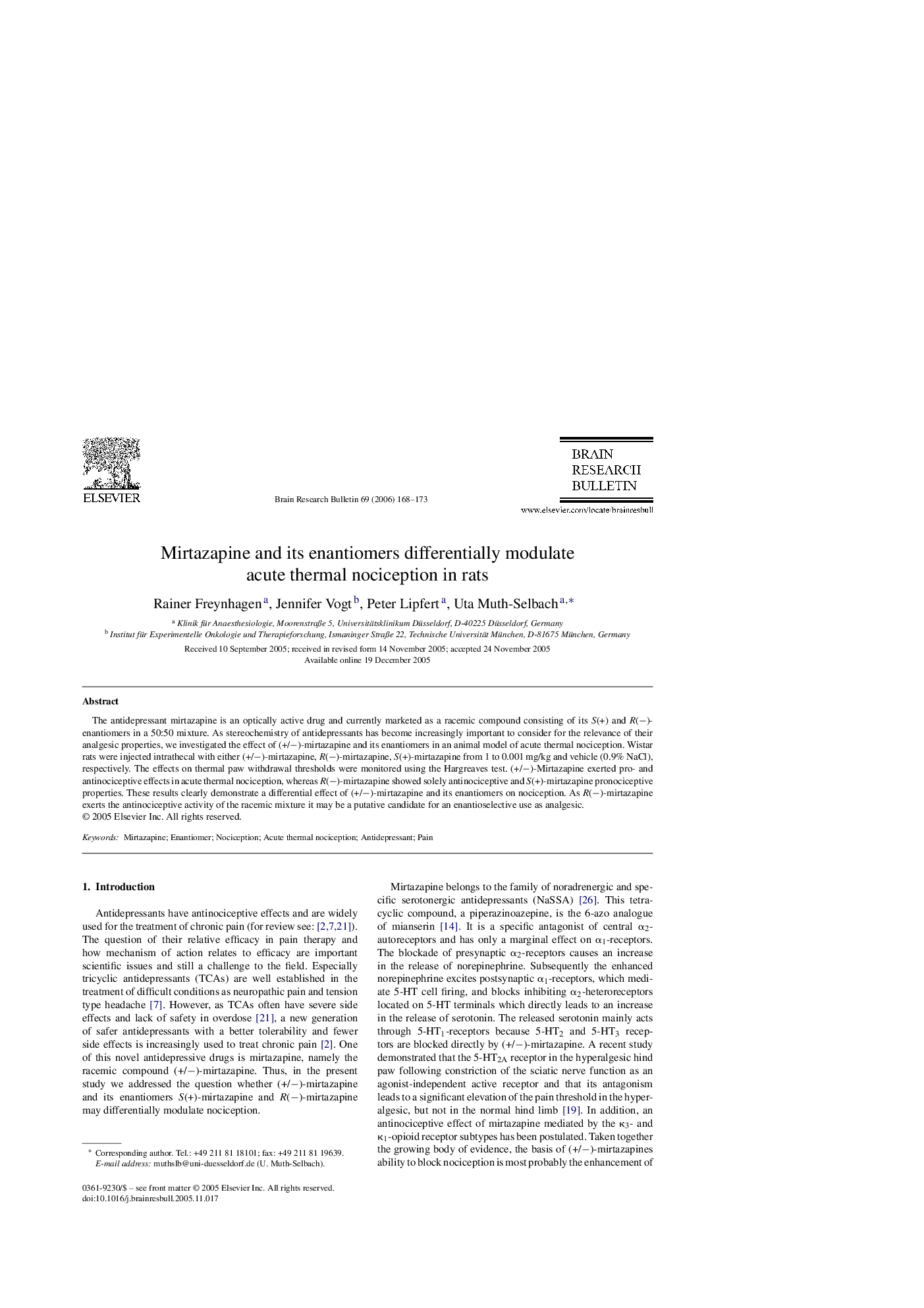| Article ID | Journal | Published Year | Pages | File Type |
|---|---|---|---|---|
| 4320358 | Brain Research Bulletin | 2006 | 6 Pages |
The antidepressant mirtazapine is an optically active drug and currently marketed as a racemic compound consisting of its S(+) and R(−)-enantiomers in a 50:50 mixture. As stereochemistry of antidepressants has become increasingly important to consider for the relevance of their analgesic properties, we investigated the effect of (+/−)-mirtazapine and its enantiomers in an animal model of acute thermal nociception. Wistar rats were injected intrathecal with either (+/−)-mirtazapine, R(−)-mirtazapine, S(+)-mirtazapine from 1 to 0.001 mg/kg and vehicle (0.9% NaCl), respectively. The effects on thermal paw withdrawal thresholds were monitored using the Hargreaves test. (+/−)-Mirtazapine exerted pro- and antinociceptive effects in acute thermal nociception, whereas R(−)-mirtazapine showed solely antinociceptive and S(+)-mirtazapine pronociceptive properties. These results clearly demonstrate a differential effect of (+/−)-mirtazapine and its enantiomers on nociception. As R(−)-mirtazapine exerts the antinociceptive activity of the racemic mixture it may be a putative candidate for an enantioselective use as analgesic.
